Histone methylation is a critical epigenetic mechanism that plays a vital role in the regulation of gene expression. Methylation, the addition of methyl groups to the amino acids that make up histones, affects how tightly or loosely DNA is wound around histone proteins, thereby influencing gene accessibility.
These methylation patterns can be stable, passing through generations, or dynamic, changing in response to environmental stimuli. The delicate balance between these states is crucial for normal development and cellular function.
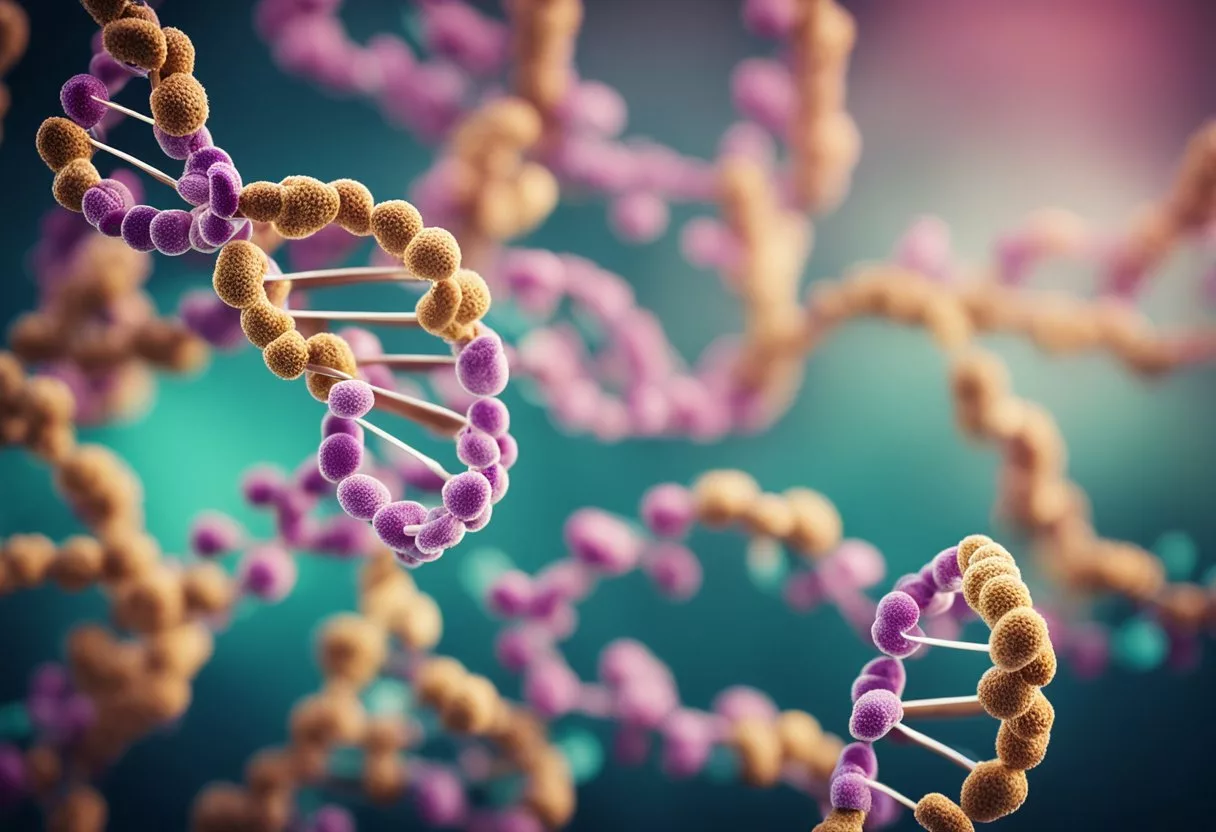
However, disruptions in histone methylation have been linked to various diseases. These include cancers, where aberrant methylation can lead to the misregulation of genes critical for cell growth and differentiation. Understanding the intricacies of histone methylation thus provides insights into the molecular underpinnings of health and disease. It also offers a potential avenue for developing targeted therapies that can modify epigenetic marks to treat diseases.
Key Takeaways
- Histone methylation influences gene expression by altering DNA-histone interaction.
- An imbalance in methylation patterns is associated with numerous diseases.
- Studying methylation offers potential for therapeutic interventions in epigenetic-related conditions.
Fundamentals of Histone Methylation
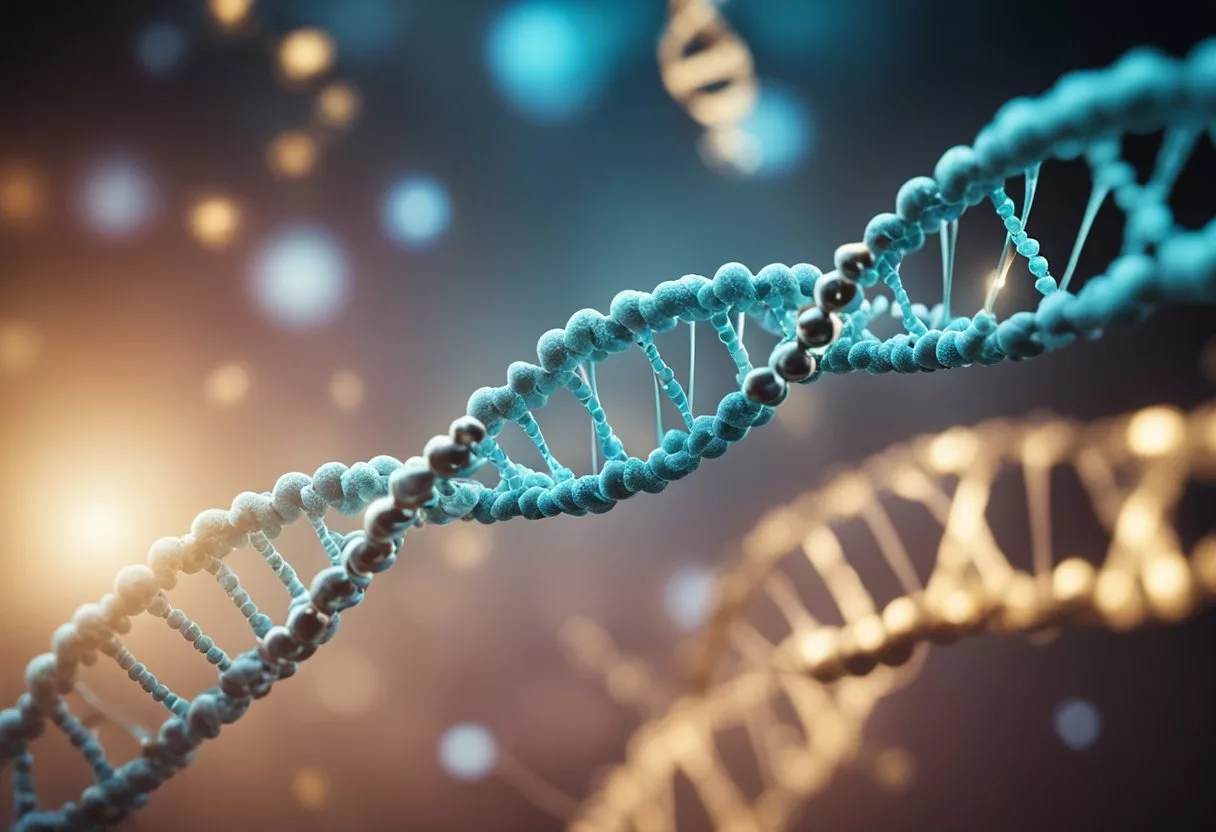
Histone methylation serves as a pivotal mechanism in epigenetic regulation, influencing gene expression and, consequently, health and disease. This modification affects chromatin structure and function through intricate biochemical processes.
Biochemical Basics of Histone Methylation
Histone methylation is a specific type of chemical modification where methyl groups are added to histones, proteins that package and order DNA into structural units called nucleosomes. Each nucleosome consists of DNA wrapped around a histone octamer. The modification often occurs on the amino acid lysine within the histone proteins, hence the term lysine methylation. Methylation does not alter the DNA sequence itself but influences the chromatin structure and thus regulates gene expression.
Histone Methyltransferases and Demethylases
Two main types of enzymes are responsible for the dynamic nature of histone methylation: histone methyltransferases (HMTs) and histone demethylases (HDMs).
Histone methyltransferases, like SET domain-containing proteins, catalyze the transfer of methyl groups to specific lysine and arginine residues on histones, a process critical for activating or repressing genes. In contrast, demethylases remove these methyl marks, reversing the regulatory signal. These enzymes work in balance to maintain proper gene expression and cellular function.
Chromatin Structure and Histone Marks
Histone modifications, including methylation, often serve as histone marks, creating a complex code – part of what is called the “histone code” – that impacts chromatin structure and function.
Chromatin can exist in a more condensed (heterochromatin) or relaxed (euchromatin) conformation, and histone methylation is influential in this transition. These epigenetic modifications facilitate or restrict access to particular genetic regions, thereby controlling gene expression profiles and affecting cellular identity and function.
Histone Methylation in Gene Regulation
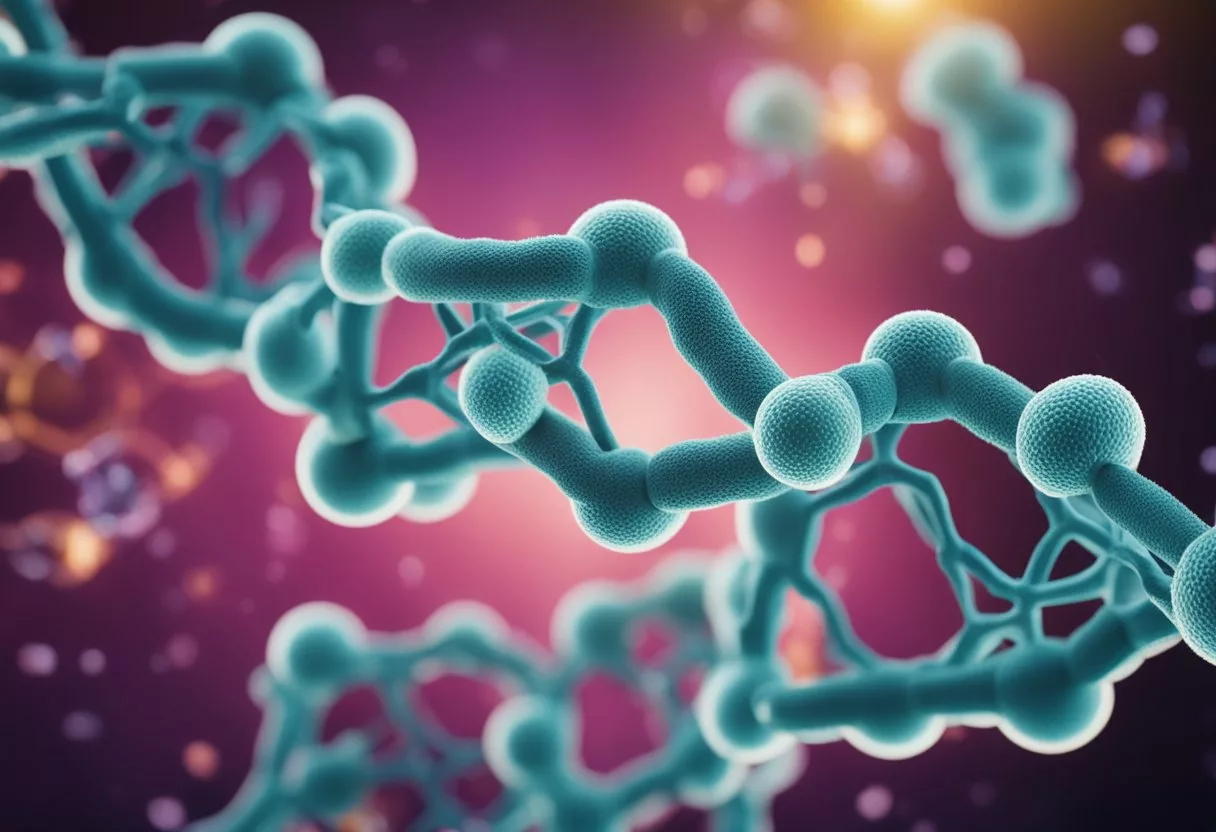
Histone methylation serves as a crucial post-translational modification impacting gene expression through the regulation of chromatin structure. This section elucidates the specific mechanisms by which histone methylation influences transcriptional regulation, its interplay with DNA methylation, and the role of nucleosome positioning alongside other chromatin modifications.
Mechanisms of Transcriptional Regulation
Histone methylation often occurs on specific lysine and arginine residues of histone proteins, which are integral components of chromatin. The methyl marks can either activate or repress gene expression.
For example, methylation of histone H3 at lysine 4 (H3K4 methylation) is generally associated with active transcription. On the other hand, methylation at histone H3 lysine 9 is commonly linked to transcriptional repression.
These modifications recruit various proteins, including transcription factors and chromatin remodelers, which collectively orchestrate the accessibility of DNA to the transcriptional machinery.
Interplay with DNA Methylation
The interaction between DNA methylation and histone modifications is intricate. DNA methylation, which mostly occurs at CpG dinucleotides, typically leads to transcriptional silencing.
However, specific histone methylation events can either enhance or counteract the repressive effects of DNA methylation.
For instance, di- and tri-methylated H3K9 facilitate a silenced chromatin state, typically in concert with DNA methylation. Meanwhile, acetylation at the same site can potentiate active transcription, indicating a dynamic balance between these modifications.
Role of Nucleosomes and Other Modifications
Nucleosomes are the repeating subunits of chromatin, consisting of DNA wrapped around histone octamers.
Histone methylation operates in conjunction with other modifications like acetylation and ubiquitination to influence nucleosome positioning and stability, thereby modulating the accessibility of DNA for transcription and related processes such as DNA repair.
In addition, various chromatin modifications can serve as signals for the recruitment of specific proteins involved in chromatin modification and remodeling, thereby affecting gene expression patterns across different genomic contexts.
Histone Methylation and Development
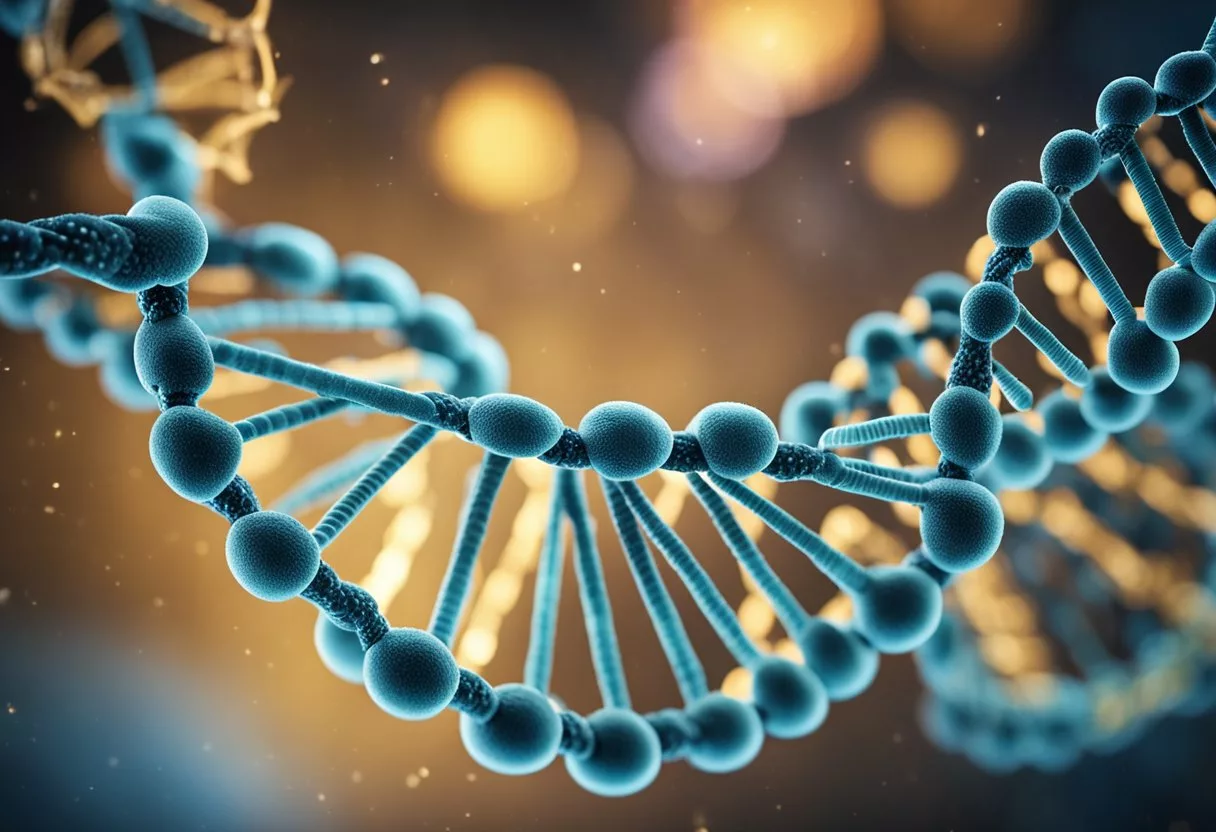
Histone methylation plays a crucial role in cellular processes, particularly in the context of development. It is an epigenetic mechanism that influences gene expression without altering the DNA sequence, affecting everything from embryonic development to stem cell differentiation.
Impacts on Embryonic Development
During embryonic development, specific histone methylations are crucial for the precise regulation of gene expression that controls the growth and differentiation of the embryo. This process ensures that embryonic cells mature into the diverse cell types that make up a fully developed organism.
Histone methylation markers, such as H3 lysine 4 (H3K4) methylation, are pivotal during this period and any irregularities in their patterns can lead to developmental anomalies or diseases.
Research in Nature outlines the importance of tightly-regulated histone methylation in health and underscores its association with disease and ageing.
Influence on Stem Cells and Differentiation
Histone methylation also has a significant impact on stem cells and their differentiation.
Stem cells rely on histone modifications to maintain their pluripotency—their capability to differentiate into any other cell type. The addition or removal of methyl groups to or from histones can activate or repress genes that are necessary for stem cells to develop into specialized cells.
For example, dynamic changes in histone methylation assist adult stem cells in adapting to tissue-specific roles as needed by the organism. A study found in PMC discusses the interplay between DNA and histone methylation enzymes in development, suggesting opportunities for new therapeutic approaches by targeting these molecular mechanisms.
Histone Methylation in Diseases
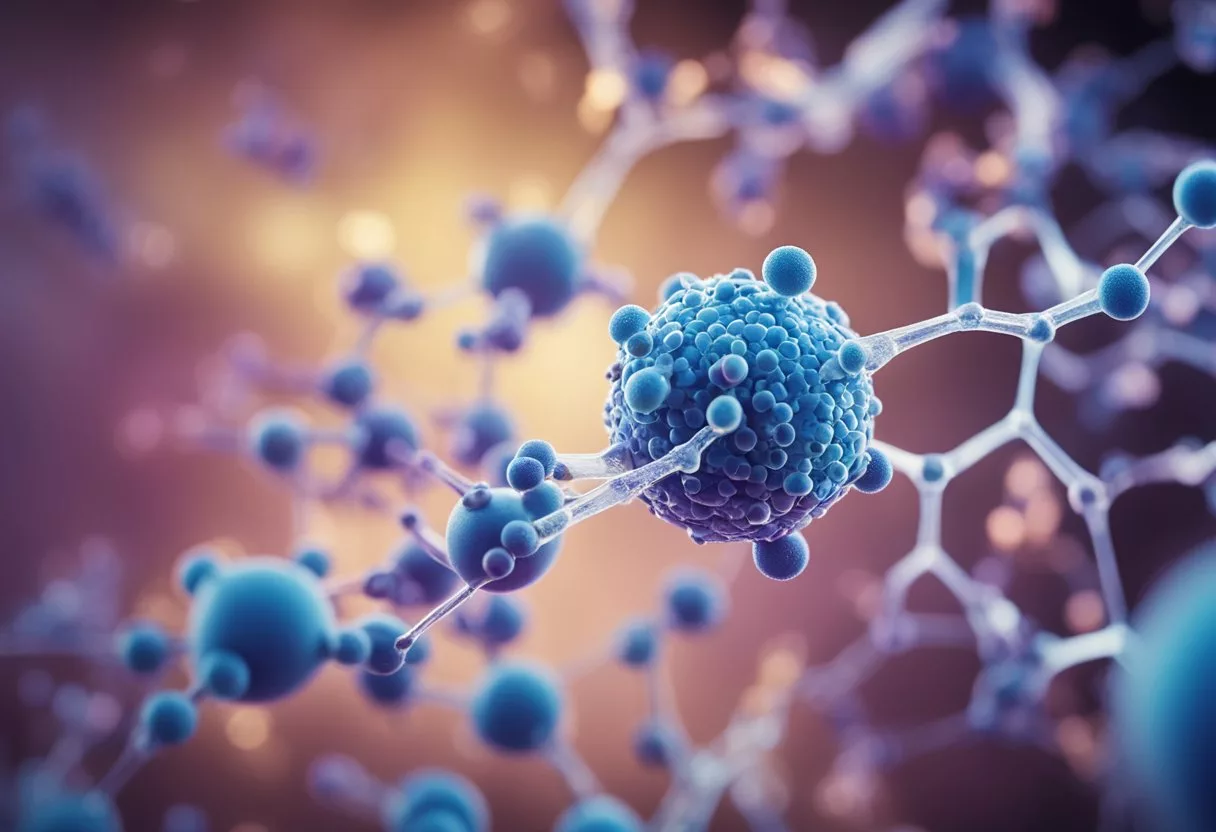
Histone methylation plays a crucial role in gene regulation and can have profound implications for various diseases. Alterations in histone methylation patterns are associated with the development and progression of numerous pathologies, including cancer, neurodegenerative disorders, and more.
Cancer and Epigenetic Alterations
Cancer is often characterized by epigenetic dysregulation, including aberrant histone methylation.
In particular, modifications such as H3K9 methylation are vital for the structural integrity of the genome and its proper expression. Disruption to these marks, by enzymes like LSD1 or DOT1L, can result in inappropriate gene silencing or activation, contributing to oncogenesis.
A deeper understanding of these epigenetic changes offers new avenues for targeted cancer therapies.
Neurological Disorders and Aging
Histone methylation alterations contribute significantly to the aging process and the development of neurological disorders.
Age-related changes in histone lysine methylation can affect the health and function of neurons, leading to the onset of diseases such as dementia and ALS.
The balance of histone methylation is essential for neuron vitality, and its dysregulation can cause cell death within the nervous system.
Other Disease Associations
Beyond cancer and neurodegenerative diseases, histone methylation is also implicated in a wider spectrum of disorders.
Enzymes that modify the methylation status of histones, such as H2A, can significantly influence disease progression by affecting gene expression profiles. Emerging studies suggest that understanding these modifications presents an opportunity for developing novel therapeutic strategies to combat various diseases.
Histone Methylation and Memory
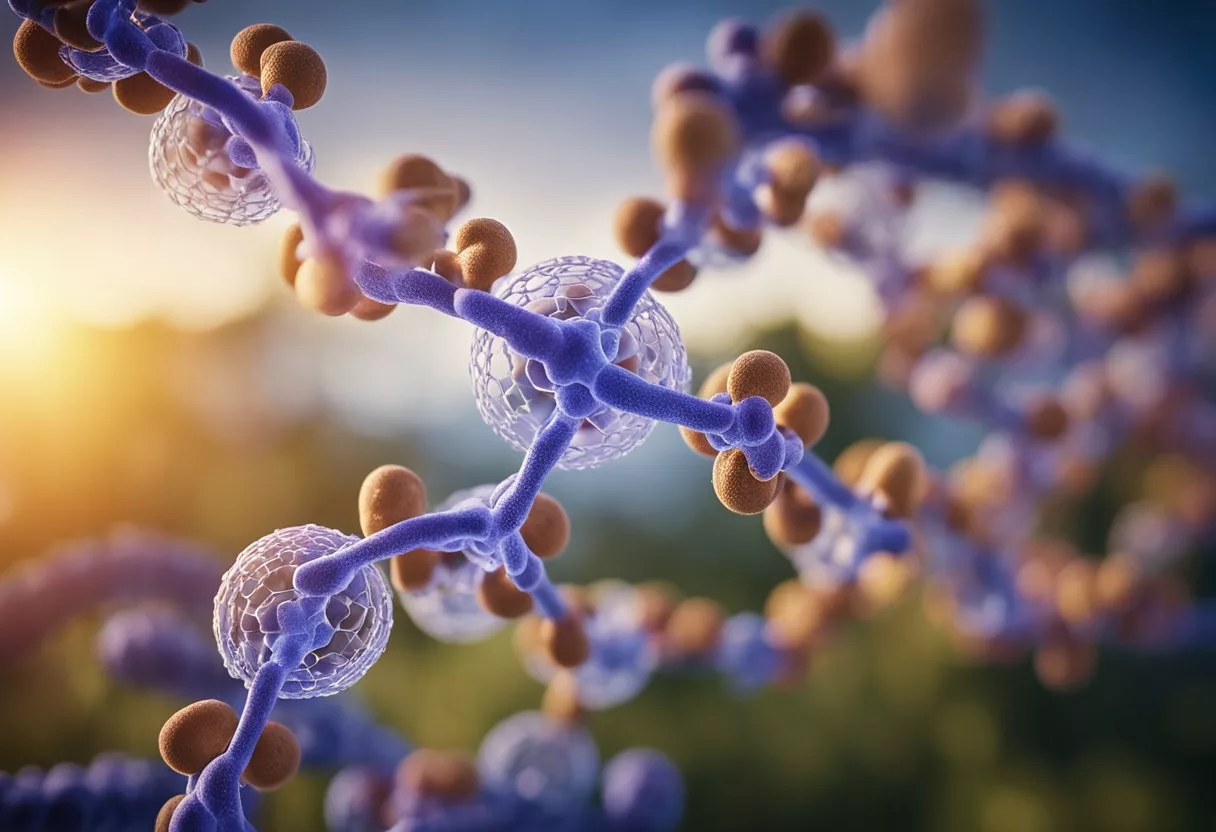
Histone methylation has become increasingly recognized as a crucial element in the regulation of memory and behavior. Research indicates that this epigenetic mechanism plays a key role in gene expression, which is intricately linked to the processes underlying memory formation and retention.
- Gene Expression: Studies suggest that different patterns of histone methylation can activate or suppress gene expression. The location and degree of methylation on histones are central to the resulting functional outcomes impacting memory.
- Memory Formation: Changes in histone methylation are associated with memory consolidation. It is believed that memory-related genes may be regulated through alterations in the chromatin structure, facilitated by histone methylation.
Histones are proteins that act as spools around which DNA winds, influencing the accessibility of genetic information. When histone methylation occurs, it alters the chromatin architecture and, subsequently, the expression of genes linked to synaptic plasticity and neural connectivity. These are both essential for memory processing and storage.
Moreover, deviations in normal histone methylation patterns have been implicated in cognitive deficits. For instance, aberrant histone methylation is observed in neurodegenerative diseases like Alzheimer’s, suggesting an imbalance in the regulation of memory-associated genes.
- Behavioral Implications: Memory is not an isolated neural function but is closely tied to behavior. Abnormal histone methylation has been shown to influence not only cognitive capabilities but also behavioral outcomes, highlighting its extensive role within the nervous system.
Advanced Topics in Histone Methylation

Exploring the intricacies of histone methylation is pivotal for understanding the regulation of gene expression and its implications for health and disease. This section delves into the complexity of the histone code and highlights emerging research areas, providing insights into the molecular mechanisms at play.
Complexity of Histone Code
The histone code is a concept that refers to the idea that specific combinations of post-translational histone tail modifications, such as methylation, acetylation, and phosphorylation, represent a sophisticated language or “code” that directs the behavior of chromatin and thus affects gene transcription. For example, histone H3 lysine 4 methylation (H3K4me) is often associated with active chromatin states and gene activation, while H4K20me3 is linked to heterochromatin formation and gene silencing. A range of modifications, including histone arginine methylation by PRMTs (Protein Arginine Methyltransferases) and histone lysine methylation by enzymes like EZH2 (Enhancer of Zeste Homolog 2), influence complex chromatin signatures that are crucial for epigenetic control.
Histone modifications often occur in patterns, with H3K4me3 frequently found in conjunction with acetylated histone H3 lysine 27 (H3K27ac) at active enhancers. This complexity extends to the recognition of these modifications by specific domains within reader proteins, such as the PHD (Plant Homeodomain) domain, which can identify and bind methylated lysine residues to facilitate or inhibit the assembly of activator or repressor complexes.
Emerging Areas in Histone Modification Research
Research in histone modification continually unveils new facets of histone biology, such as the discovery of histone lysine crotonylation and its role in active gene regulation. Advanced analytical techniques are elucidating the roles of specific modifications, like the influence of JMJC domain-containing proteins and histone lysine trimethylation on nucleosome positioning and chromatin accessibility.
The link between histone mutations and disease is an emerging topic, as mutations in genes encoding histone-modifying enzymes, such as the oncogene GASC1 or enzymes like JMJD6 (Jumonji Domain Containing 6), have been identified in various cancers. Histone arginine demethylase activity has also been implicated in the regulation of cell death pathways and histidine-mediated pathways in intellectual disability. Moreover, the relationship between noncoding RNAs and histone modifications provides a new layer of regulatory complexity, shaping the understanding of epigenetic control through chromatin states.
Investigators are also focusing on the crosstalk between histone modifications and DNA methylation. They are particularly interested in regions like CpG islands and their role in diseases when aberrantly methylated. Tools like histone deacetylases (HDACs) and PAD4, which modifies ARK(S/T) motifs, are at the frontier of therapeutic research for modulating chromatin structure and function.
Frequently Asked Questions

Histone methylation plays a critical role in regulating gene expression and can be a key factor in the development of various diseases. This section aims to address specific questions on how histone modifications, particularly methylation, are linked to diseases.
What is the role of histone methylation in the progression of specific diseases?
Histone methylation is implicated in the regulation of genes that can influence the progression of specific diseases. For instance, aberrant methylation of histones has been associated with cancer, where it can lead to the misexpression of oncogenes and tumor suppressor genes.
How do alterations in histone methylation contribute to disease states in humans?
Alterations in histone methylation modify the chromatin structure and can either activate or silence gene expression. These modifications can contribute to disease states in humans by disrupting the normal functions of genes involved in cell cycle regulation, DNA repair, and cell proliferation.
What are the differences between histone methylation and acetylation in the context of disease?
While both histone methylation and acetylation affect gene expression and are involved in disease, they do so in different ways. Acetylation tends to be associated with transcriptional activation, whereas methylation can lead to both activation and repression. The balance and interplay between these two modifications are crucial in maintaining normal cellular functions and preventing disease development.
In what ways does histone methylation influence gene expression and what are the implications for health?
Histone methylation influences gene expression by altering the accessibility of transcription factors to DNA. This modification can have broad implications for health as it can result in the misregulation of genes necessary for normal cell function, potentially leading to various diseases, including neurodegenerative disorders and cancer.
How does the interplay between histone and DNA methylation affect disease outcomes?
The interplay between histone and DNA methylation is complex and can create a dense and repressive chromatin environment. This interaction is particularly important in the context of cancer, as it can lead to silencing of tumor suppressor genes and affect disease outcomes.
Are there common diseases known to be associated with abnormalities in histone methylation?
Yes, there are. Common diseases associated with abnormalities in histone methylation include cancer, cardiovascular diseases, and neurological disorders.
Changes in the pattern of histone methylation are a hallmark of many types of cancer. These changes affect gene expression and contribute to tumor development and progression.